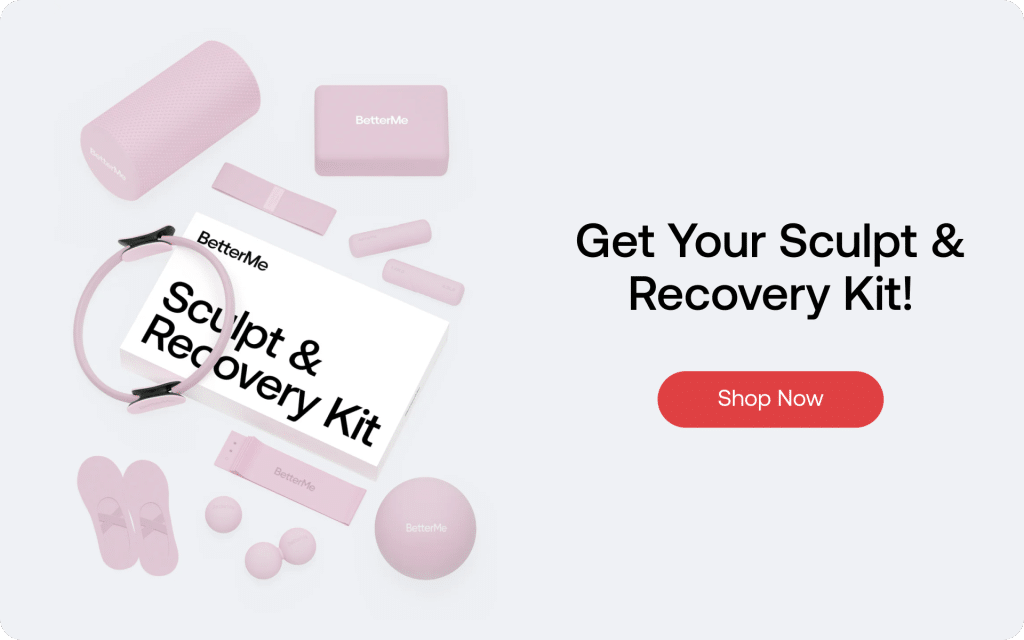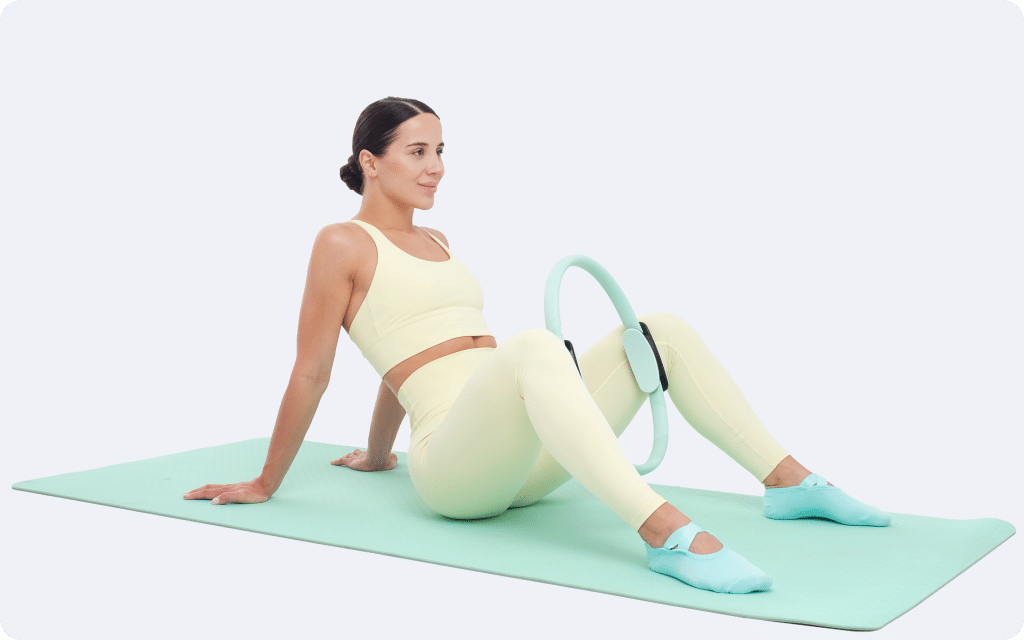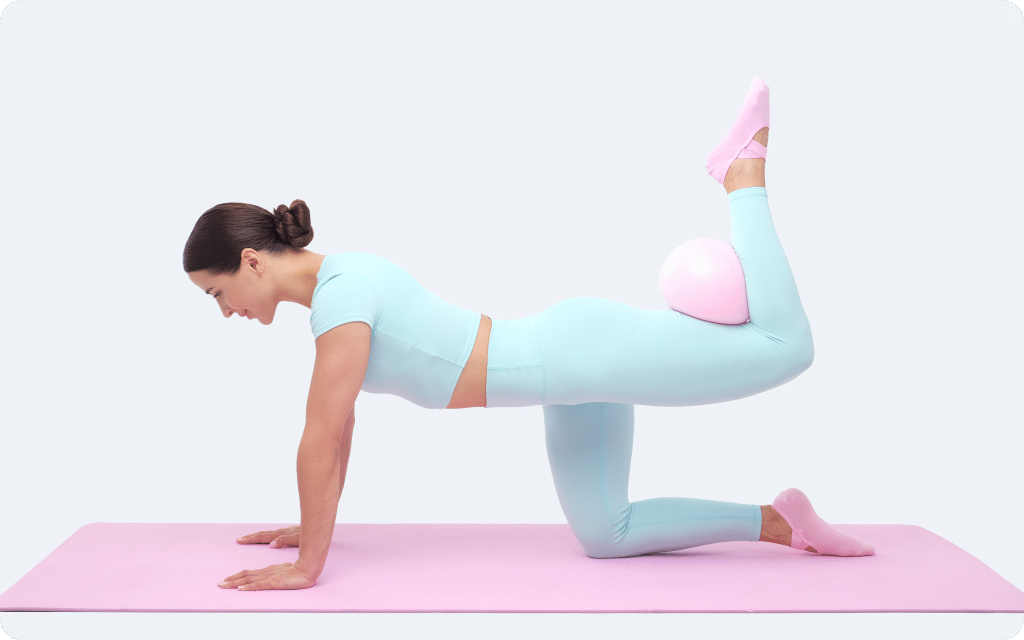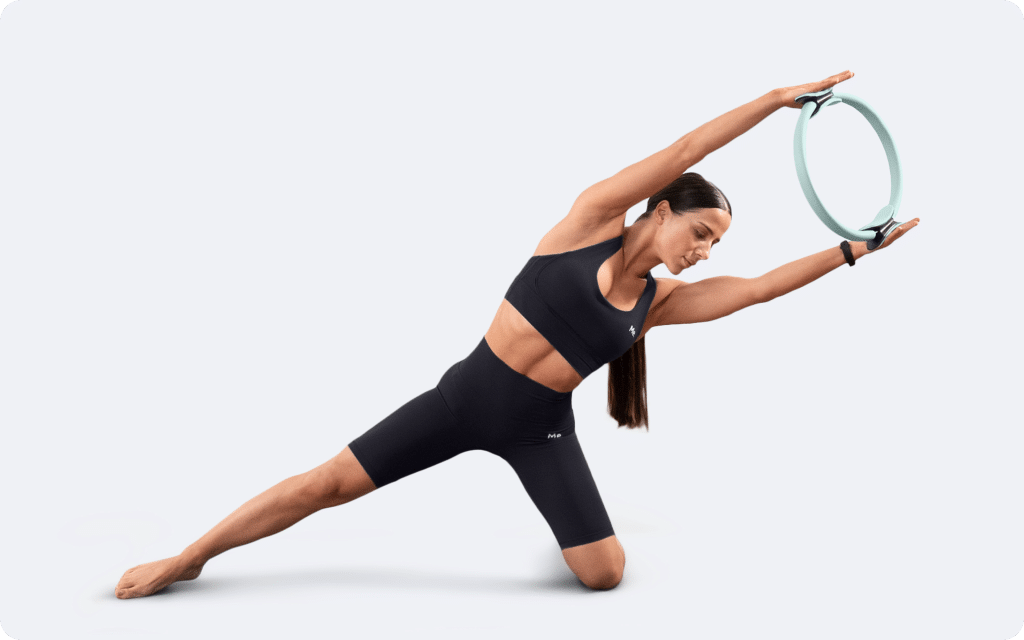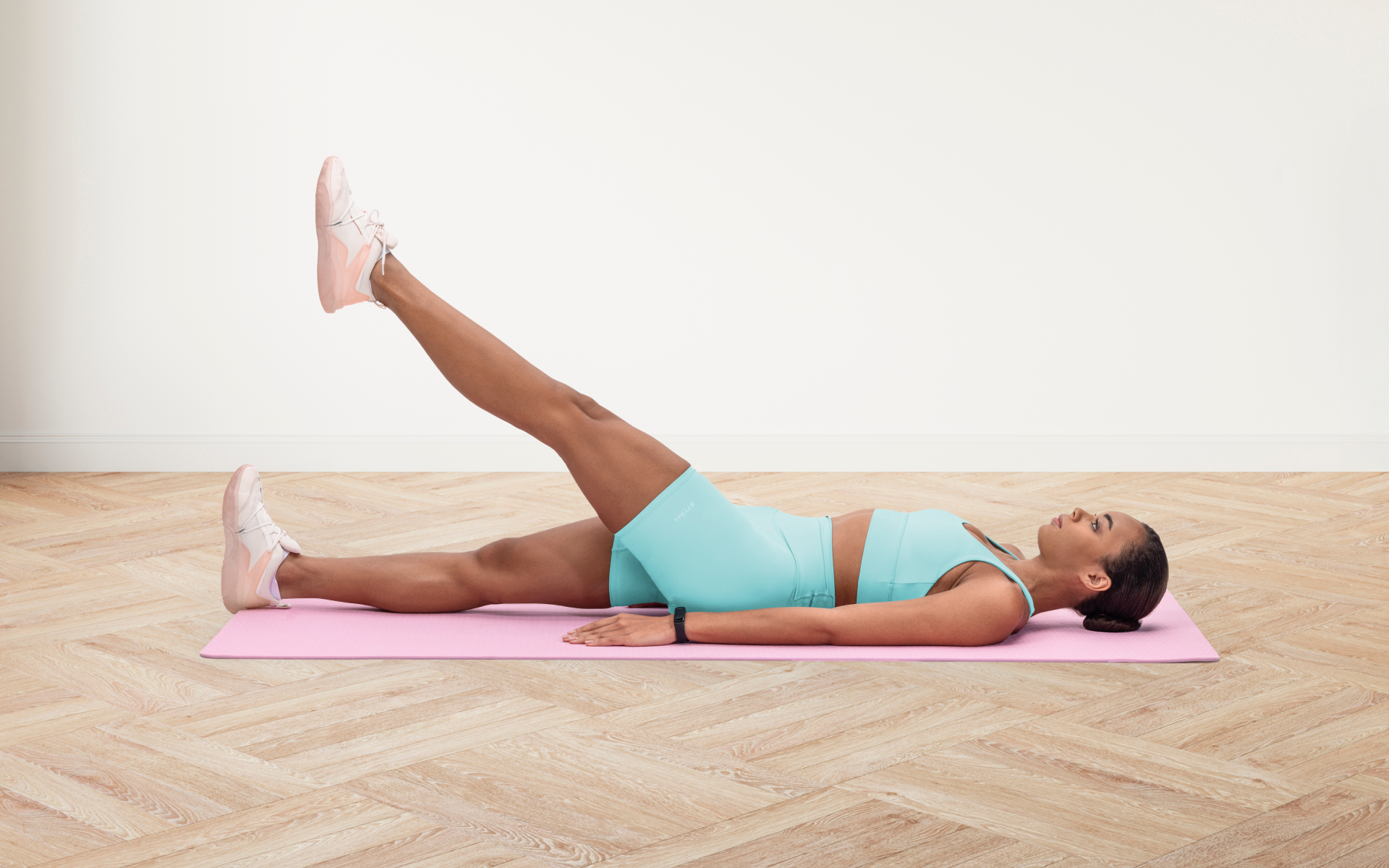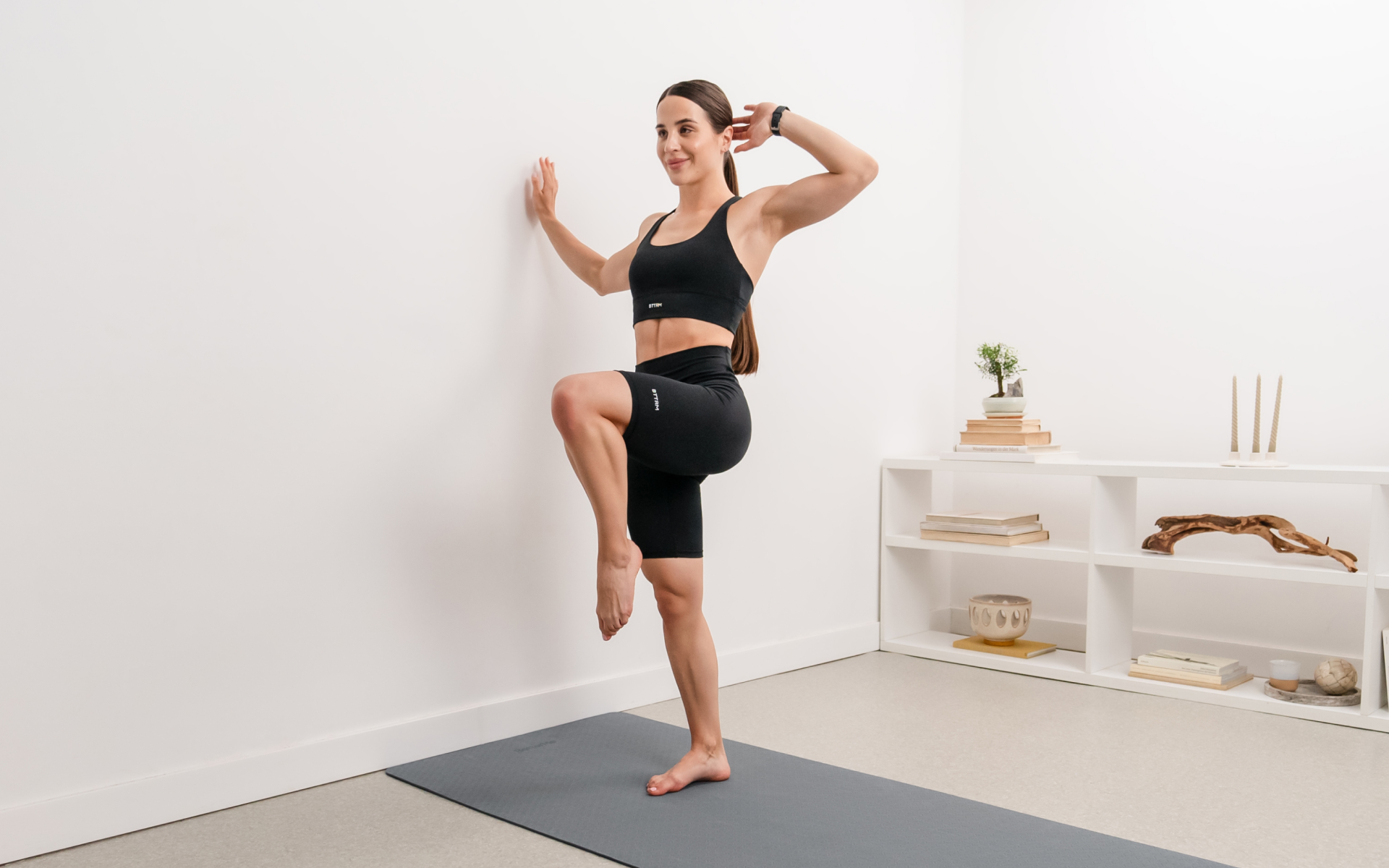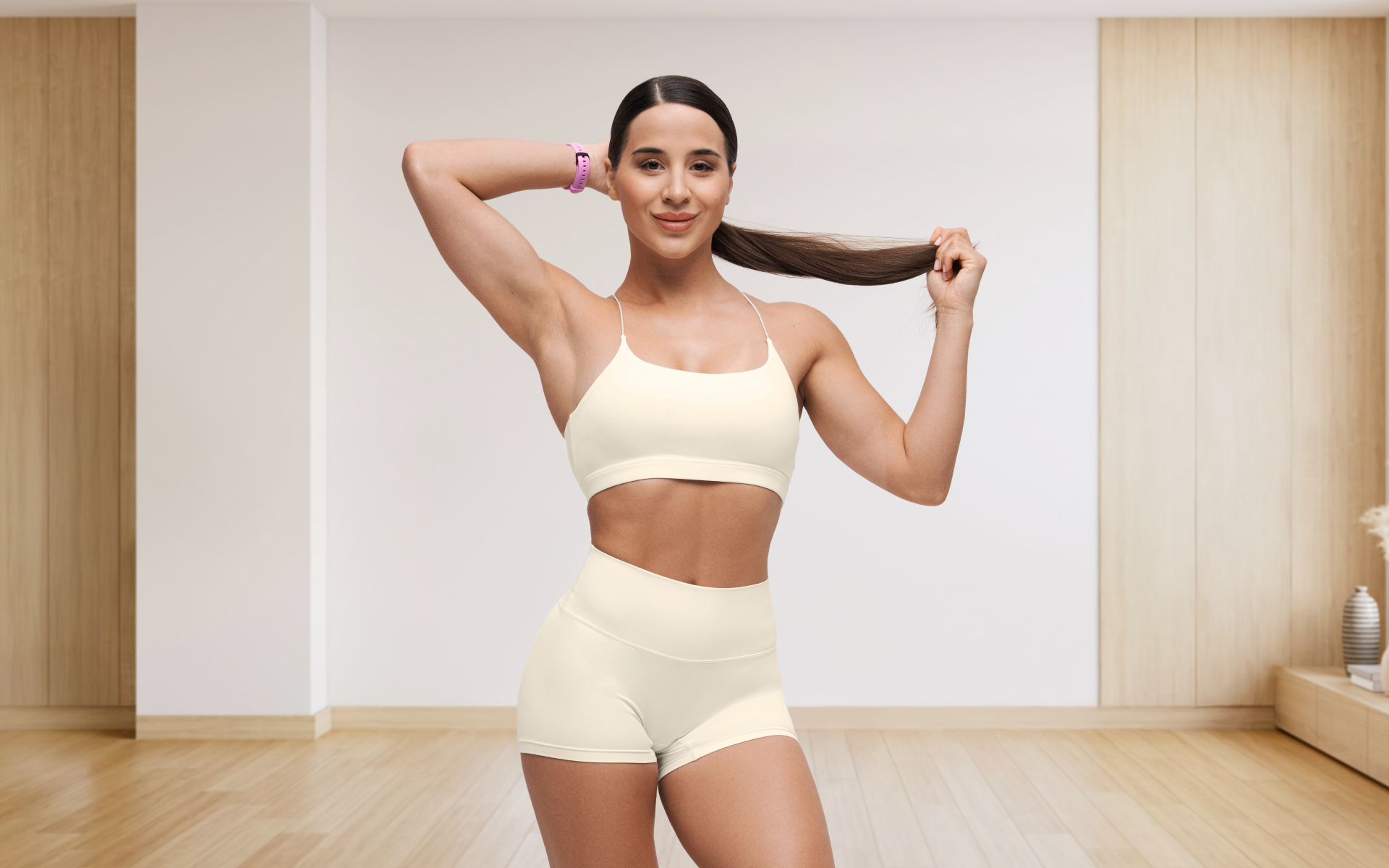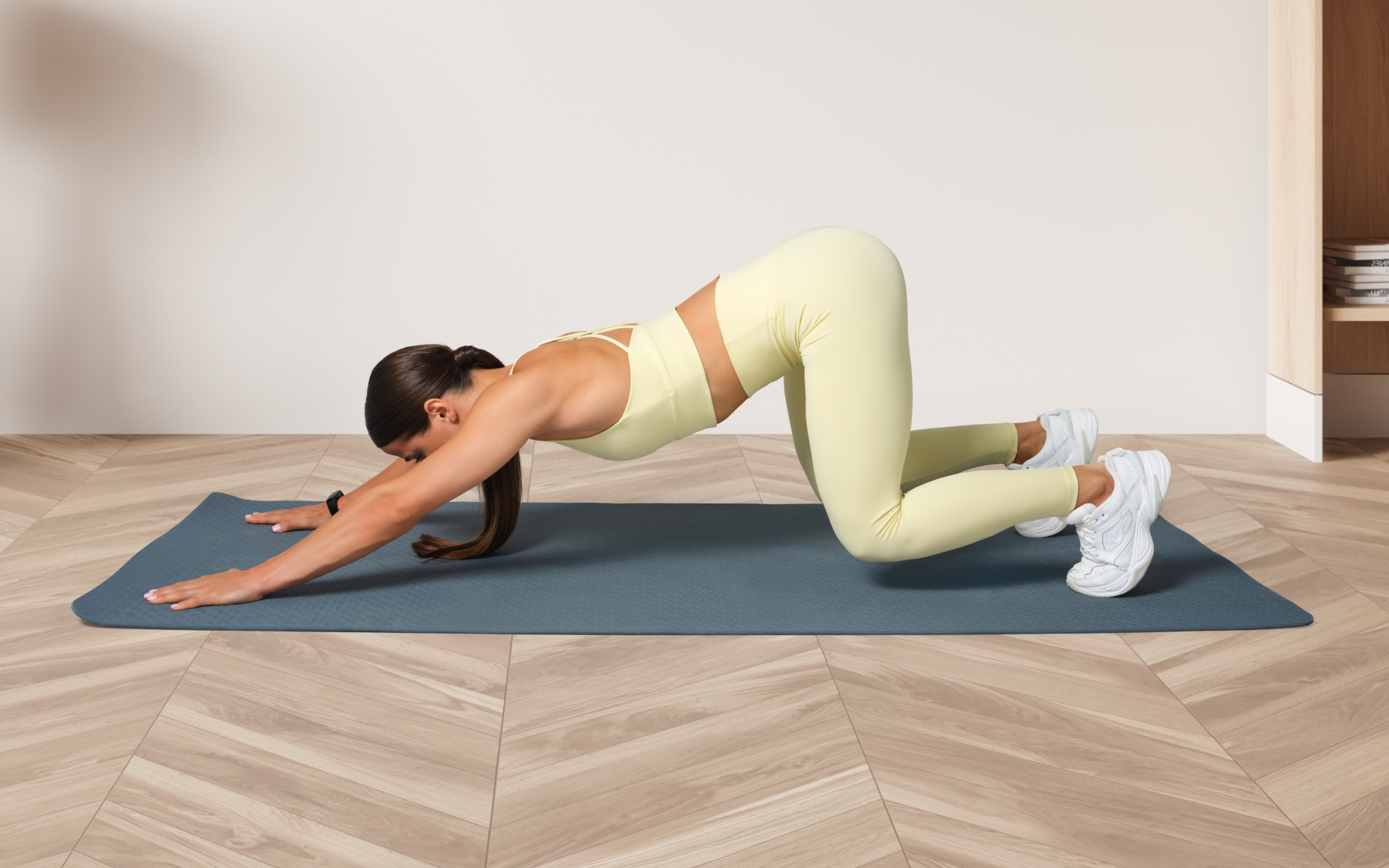There’s always a new diet or exercise trend claiming to be the key to weight loss. Some seem too good to be true, while others require strict and often unsustainable lifestyle changes.
Let’s discover if practicing Pilates every day helps you lose weight and what type of Pilates gives you the best results.
Can You Lose Weight Doing Pilates?
In the strictest sense, you will burn some calories during your Pilates session. Any activity requiring movement, even fidgeting, will use energy and burn calories (1).
The weight-loss potential of Pilates comes from building lean muscle, causing calorie burn (2).
When you build more muscle, your resting metabolic rate (RMR) will be higher (3).
RMR is the body’s energy at rest to maintain basic functions like breathing and circulation (4).
The higher your RMR, the more calories you burn when you’re not actively exercising. Practicing Pilates regularly and building lean muscle will increase overall calorie expenditure, and you’ll lose weight over time (5).
Furthermore, Pilates can improve your fitness, leading to better performance in other exercises, recovery, and results.
Can You Lose Belly Fat Doing Pilates Only?
Many would hope and wonder, “Does Pilates help you lose belly fat?”
But the truth is that spot reduction (losing fat in a specific area) is impossible through exercise. Belly fat loss results from sustainable weight loss and diet (6).
However, Pilates teaches pelvic floor and profound core muscle control, which can:
- Increase core muscle activation during exercise, leading to a more efficient and effective workout.
- Improve posture and balance, making you look taller and leaner.
- Strengthen the abdominal muscles, giving the appearance of a flatter stomach.
While Pilates may not specifically target belly fat, it can contribute to weight loss and improve muscle tone.
Combine a consistent Pilates routine with a healthy and balanced diet to lose belly fat. This combination can help you achieve your weight loss goals and maintain a healthy body.
BetterMe: Health Coaching app helps you achieve your body goals with ease and efficiency by helping to choose proper meal plans and effective workouts. Start using our app and you will see good results in a short time.
How Often Should I Do Pilates to Lose Weight?
Do Pilates as often as you can without burning out. Consistency is vital in any exercise regimen, and Pilates is no exception.
If you’re a beginner, start with 2-3 sessions per week.
Gradually increase your workouts to 4-5 times per week as your body adapts and strengthens.
However, listen to your body and do not push yourself too hard. If you feel overly tired or sore, take a rest day or opt for a lighter Pilates session, such as stretching or gentle flow.
Depending on your overall workout routine, you can also incorporate Pilates as a form of cross-training.
For example, if you enjoy running or weightlifting, you can use Pilates as an active recovery day to give your body a break while still staying active.
Read more: Is Pilates Cardio or Strength Training?
Is 30 Minutes of Pilates a Day Enough to Lose Weight?
30 minutes of Pilates a day is better than no exercise at all.
For maximum benefits, aim for 45-60 minutes of Pilates at least 4-5 times a week. This time frame allows you to work through various exercises and target different muscle groups for optimal muscle growth and calorie burn.
On busy weeks, squeeze in 20-30 minutes where you can because every bit of movement counts towards your overall progress.
What Happens if I Do Pilates Every Day?
Consistently practicing Pilates will:
Improve Your Range of Motion
Range of motion refers to the movement potential of a joint or muscle. It’s how far you can move a body part until you reach your limit.
By improving your range of motion through Pilates, you can perform other exercises more efficiently and with better form.
This new flexibility means targeting the right muscles while weight lifting, having an efficient running or cycling stride, and reducing your risk of injury.
Enhance Your Core Strength
Pilates is known for strengthening your core muscles, essential for maintaining good posture, balance, and stability (7). A strong core prevents lower back pain and improves overall strength (8).
A solid core will also make performing other exercises, such as lifting weights or high-intensity interval training (HIIT), more effortless.
Increase Your Flexibility
Incorporating stretching into your daily routine has numerous benefits, including improved flexibility. Pilates includes stretching movements and focuses on controlled movements to increase the range of motion in joints (9).
Being more flexible can make everyday activities like bending down to tie your shoes or reaching for items on high shelves easier and less straining.
Improve Your Mind-Body Connection
One of Pilates’s main principles is connecting the mind and body through breathing techniques (10). This connection allows you to control your movements during exercise better.
You can improve muscle activation and prevent injury by tuning into your body and using proper form in Pilates. A heightened mind-body connection carries over into other exercises, making them more effective.
Improve Your Mental Health
Studies show regular exercise has numerous mental health benefits (11), and Pilates is no exception. The mind-body connection and focus on breathing can help reduce stress, anxiety, and depression.
Improve Your Sleep Quality
Sleep quality determines how well-rested and recovered you feel.
Pilates can help improve sleep quality by:
- Reducing stress
- Promoting relaxation
- Releasing tension in the body (12)
- Regulating appetite-controlling hormones
- Aiding in weight loss
Make Better Food Choices
Practicing Pilates every day can also lead to making better food choices.
On a psychological level, when we invest in our health and well-being through exercise, we also tend to make conscious choices in other areas of our lives.
Pilates improves digestion and reduces bloating, making you feel less sluggish and more motivated to choose healthier food options.
Read more: 7-day Mediterranean Diet for Weight Loss: What to Eat and How to Follow It
Potential for Overtraining
While practicing Pilates every day can have numerous benefits, it’s essential to listen to your body and not overdo it.
Overtraining can lead to:
- Fatigue
- Burnout
- Injuries (13).
Make sure to vary your Pilates routine and incorporate rest days or lighter Pilates sessions throughout the week. Rest days give your body time to recover and prevent overtraining.
How Much Weight Can You Lose in A Month with Everyday Pilates?
The amount of weight you can lose in a month by practicing Pilates every day will vary depending on several factors, such as your current weight, diet, and intensity of the workouts.
The more intense and consistent your Pilates routine is, the more weight you can lose. Being on a calorie deficit (burning more calories than you consume) also plays a significant role in weight loss (14).
You can expect results within a month if you consistently combine your daily Pilates practice with a healthy and balanced diet.
Safe and sustainable weight loss is typically 1-2 pounds per week (15).
While the number on the scale may not change drastically, you may notice improvements in the following:
- Muscle tone
- More energy
- Looser fitting clothing
- Improved overall fitness
Weight loss is a gradual journey where you must focus on progress over perfection and scale numbers.
More energy, better posture, and improved overall health are all valuable outcomes of practicing Pilates daily.
How Long until Pilates Shows Results?
How long it takes to see results from Pilates can vary depending on several factors, but many people notice positive changes within a few weeks.
Here’s a breakdown of what influences the timeline and the types of results you might experience:
Factors Influencing the Timeline
- Frequency of Practice:
Consistency is key in Pilates. Practicing two to three times a week can lead to noticeable improvements in a few weeks.
The more regularly you practice, the quicker the benefits will manifest. But remember that rest is also a massive part of the workout plan. Give your body time to rest and reset before pushing through another workout.
- Individual Fitness Levels:
Beginners may experience rapid changes as their bodies adapt to new movements. In contrast, those with a higher fitness level might see slower, more gradual improvements as they fine-tune existing skills.
- Personal Goals:
Your objectives—increased flexibility, enhanced core strength, or better posture—will determine how you measure progress.
Tailoring your practice to your goals can help speed up the results.
Expected Results
- Improved Flexibility: One of the first noticeable changes is increased flexibility. Many practitioners find that they can reach further and move more fluidly within the first few weeks.
- Enhanced Core Strength: With regular practice, you might notice a firmer, more toned midsection within a month or so (8).
- Better Posture: As Pilates emphasizes alignment and balance, improvements in posture often become apparent early on (16). Many find themselves standing taller and more confident after just a few sessions.
- Overall Well-Being: Beyond physical changes, Pilates promotes mental clarity and stress reduction (17). This sense of well-being can enhance your daily life, and you will notice it after your first session.
While results can vary, the journey with Pilates is as rewarding as the destination. The key is to stay committed and patient. Each session contributes to your overall improvement, building on the previous one.
If you wish to free yourself from all the extra pounds that have been weighing you down for way too long, start using the BetterMe: Health Coaching app and overhaul your entire life!
Why Am I Not Losing Weight with Pilates?
If you’ve been diligently practicing Pilates but aren’t seeing the weight loss results you expected, there are a few potential reasons for it:
Dietary Habits
Weight loss is primarily influenced by your diet (18). Even with regular Pilates sessions, consuming more calories than you burn can impede weight loss.
Maintaining a balanced diet rich in whole foods, lean proteins, and plenty of fruits and vegetables is crucial.
Intensity of Workouts
While Pilates is excellent for building core strength and flexibility, it may not provide the cardiovascular intensity needed to burn significant calories. Incorporating more vigorous exercises, like cardio or strength training, can increase your calorie expenditure.
Muscle Gain
Pilates can lead to muscle gain. While this is a positive change for overall fitness and health, it can contribute to the number on the scale staying the same or increasing.
Instead of focusing solely on weight loss, look at the other physical changes, such as:
- Strength
- Increased muscle tone
- Losing inches around your waist, chest, arms, and legs
Tips to Enhance Weight Loss
- Adjust Your Diet: Monitor portion sizes and reduce processed foods and sugary drinks. Focus on nutrient-dense meals that support your fitness goals.
- Set Realistic Goals: Weight loss is a journey that requires time and patience. Set achievable milestones and celebrate small victories along the way to maintain motivation.
- Monitor Progress: Keep track of your workouts, diet, and changes in your body. This tracking helps identify patterns or areas needing adjustment and keeps you accountable.
Weight loss is a holistic journey that goes beyond the hours spent exercising. It’s about making sustainable lifestyle changes. Stay positive, adjust your approach as needed, and remain committed to long-term health and wellness.
Learn about the science behind Pilates for Weight Loss in our previous blog post.
Pilates improves muscle tone and posture, leading to a more lean and defined appearance. However, a few factors affect how your body changes, such as diet, frequency of practice, and genetics. Pilates increases muscle mass, which helps boost metabolism and burn calories. However, weight loss cannot be solely attributed to Pilates and requires a combination of consistent exercise and a healthy diet. Pilates and HIIT (High-Intensity Interval Training) offer unique benefits and can effectively achieve different fitness goals. Pilates focuses on strength, flexibility, and posture (9). HIIT focuses on cardiovascular intensity and the ability to burn calories quickly (19). Consider your fitness goals and preferences to determine which workout is best for you. You can also learn about the Difference Between Barre and Pilates in our previous article. Pilates and gym workouts offer significant health benefits, so it comes down to personal preference. Pilates emphasizes core strength and flexibility, while gym workouts focus on building muscle mass and cardiovascular fitness. Find the exercise routines you enjoy and can stick with for the long run. If you’re always busy but want to lose weight, check out our guide – Wall Pilates Workout 10 Minutes.Frequently Asked Questions
Can pilates change your body shape?
Does pilates slim you down?
Is pilates better than HIIT?
Is Pilates better than gym?
Conclusion
Overall, there are downsides and benefits of doing pilates everyday.
Can you lose weight doing Pilates every day? It’s possible, but you need consistent practice, proper nutrition, and patience.
Remember that Pilates is a holistic exercise method promoting physical and mental well-being; weight loss will happen naturally.
Furthermore, exercising daily without having rest days leads to burnout and injuries.
Listen to your body, set realistic goals, and trust the process.
DISCLAIMER:
This article is intended for general informational purposes only and does not serve to address individual circumstances. It is not a substitute for professional advice or help and should not be relied on for making any kind of decision-making. Any action taken as a direct or indirect result of the information in this article is entirely at your own risk and is your sole responsibility.
BetterMe, its content staff, and its medical advisors accept no responsibility for inaccuracies, errors, misstatements, inconsistencies, or omissions and specifically disclaim any liability, loss or risk, personal, professional or otherwise, which may be incurred as a consequence, directly or indirectly, of the use and/or application of any content.
You should always seek the advice of your physician or other qualified health provider with any questions you may have regarding a medical condition or your specific situation. Never disregard professional medical advice or delay seeking it because of BetterMe content. If you suspect or think you may have a medical emergency, call your doctor.
SOURCES:
- Burning calories without exercise (2021, health.harvard.edu)
- Physical and psychological benefits of once-a-week Pilates exercises in young sedentary women: A 10-week longitudinal study (2016, pubmed.ncbi.nlm.nih.gov)
- Effect of resistance training on resting metabolic rate and its estimation by a dual-energy X-ray absorptiometry metabolic map (2014, nature.com)
- Differences Between BMR and RMR (2023, webmd.com)
- Increasing muscle mass to improve metabolism (2013, ncbi.nlm.nih.gov)
- Weight loss – a healthy approach (2024, betterhealth.vic.gov.au)
- Pilates – health benefits (2021, betterhealth.vic.gov.au)
- Core exercises: Why you should strengthen your core muscles – Mayo Clinic (2021, mayoclinic.org)
- Pilates for Improvement of Muscle Endurance, Flexibility, Balance, and Posture (2010, journals.lww.com)
- The Impacts of Pilates and Yoga on Health-Promoting Behaviors and Subjective Health Status (2021, ncbi.nlm.nih.gov)
- Role of Physical Activity on Mental Health and Well-Being: A Review (2023, ncbi.nlm.nih.gov)
- Effect of Pilates on Sleep Quality: A Systematic Review and Meta-Analysis of Randomized Controlled Trials (2020, frontiersin.org)
- Overtraining Syndrome as a Complex Systems Phenomenon (2022, frontiersin.org)
- Optimal Diet Strategies for Weight Loss and Weight Loss Maintenance (2021, ncbi.nlm.nih.gov)
- Steps for Losing Weight (2022, cdc.gov)
- Effects of Pilates on Body Posture: A Systematic Review (2024, sciencedirect.com)
- The effects of pilates on mental health outcomes: A meta-analysis of controlled trials (2018, pubmed.ncbi.nlm.nih.gov)
- Optimal diet strategies for weight loss (2021, pubmed.ncbi.nlm.nih.gov)
- The Effect of High-Intensity Interval Training Type on Body Fat Percentage, Fat and Fat-Free Mass: A Systematic Review and Meta-Analysis of Randomized Clinical Trials (2021, ncbi.nlm.nih.gov)

